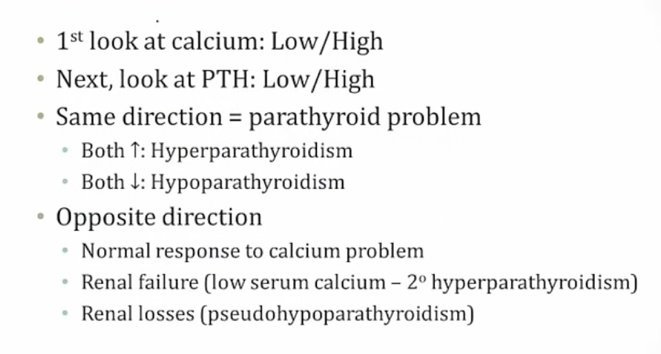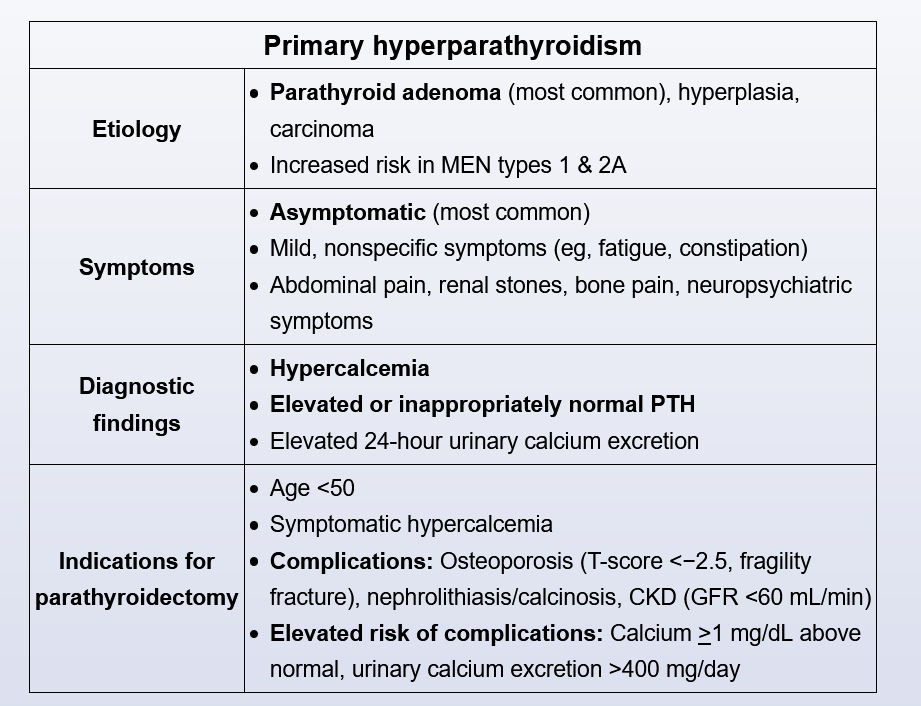hyperparathyroidism
- related: Endocrine, Parathyroid
- tags: #endocrine
Hyperparathyroidism

- primary hyperparathyroidism: inappropriate high PTH
- high PTH, high Ca
- secondary: chronically low Ca in renal failure
- high PTH, low Ca
- tertiary: renal failure, unresponsive.
- high PTH, high Ca
- familial hypocalciuria hypercalcemia: abnormal Ca sensor, higher setpoint
- can look like primary
- nl PTH, high Ca, low urinary Ca
Primary hyperparathyroidism management
Links to this note
- regular follow up with serum Ca, creatinine, DXA scanning
- Asymptomatic and age >50
- Surgery:
- Symptomatic, established complications, or age <50
- Elevated Ca >1 above normal or urinary Ca > 400

Patients with PHPT are often erroneously advised to restrict calcium and vitamin D, leading to an increased risk for osteoporosis. However, careful supplementation with periodic monitoring is appropriate.
Nuclear scintigraphy is used to identify the location of a parathyroid adenoma or hyperplasia prior to surgery. However, for patients in whom surgery is not indicated, scintigraphy would not change management and is unnecessary.
Although hyperparathyroidism is a component of certain multiple endocrine neoplasia (MEN) syndromes, these conditions are rare and screening is not indicated in the absence of additional symptoms or a family history of MEN.